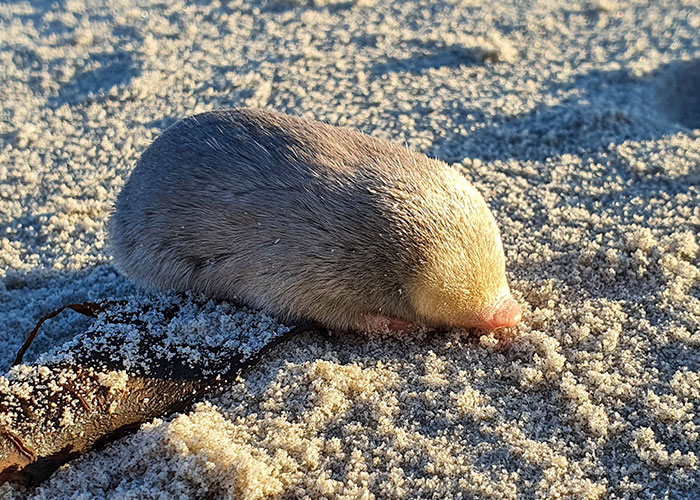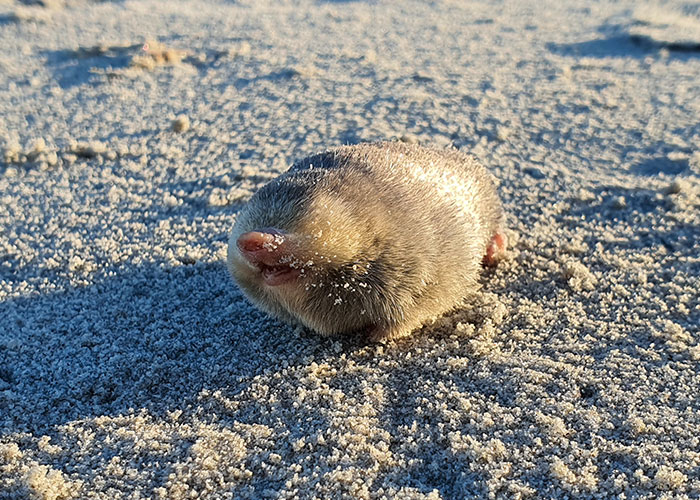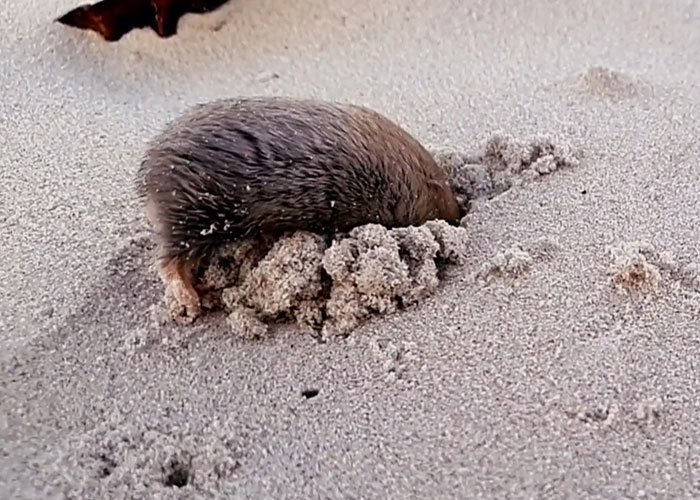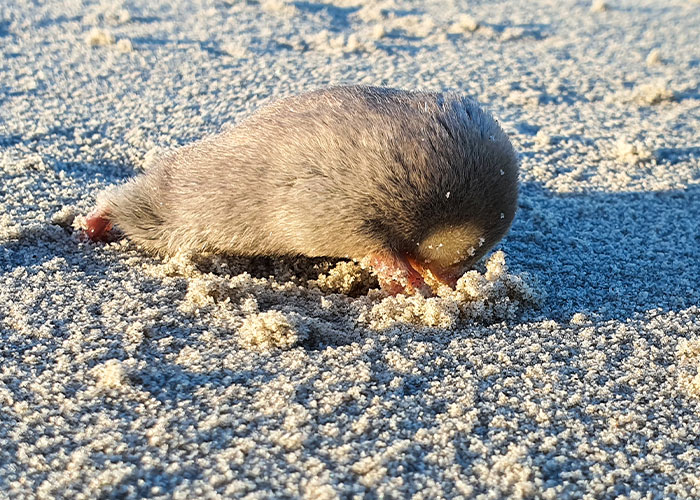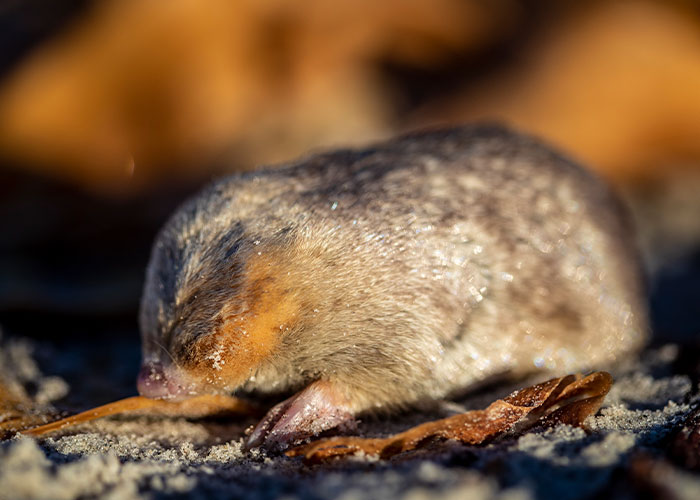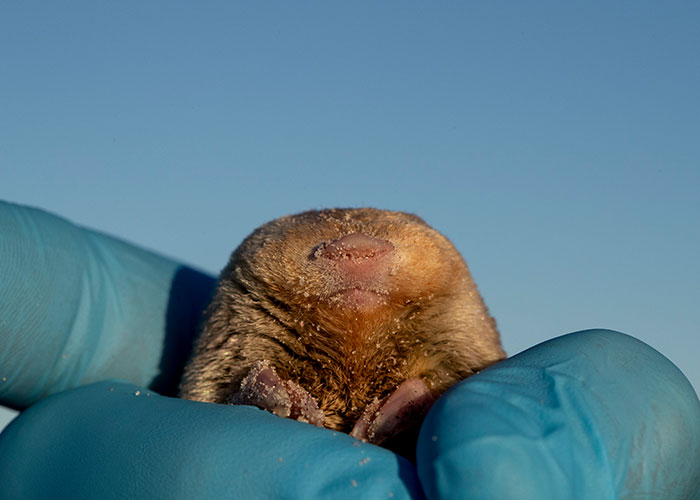A rare animal that was thought to be extinct was unexpectedly found again by a dog.
The animal in question, a shimmering mole that swims through sand, was just rediscovered almost 100 years after wildlife experts said it had disappeared forever.
The species, called De Winton’s golden mole, was reportedly last seen in 1936 before being found again living on beaches on the northwest coast of South Africa.
The Endangered Wildlife Trust (EWT)’s team along with experts from the University of Pretoria reportedly sampled soil in the area looking for mole DNA, before deploying a scent-detection border collie to sniff out the creatures.
A shimmering mole was just rediscovered almost 100 years after wildlife experts had said it was extinct
Image credits: JP Le Roux
Image credits: JP Le Roux
Cobus Theron, a senior conservation manager for EWT, reportedly said: “Though many people doubted that De Winton’s golden mole was still out there, I had good faith that the species had not yet gone extinct.
“I was convinced it would just take the right detection method, the proper timing, and a team passionate about finding it.
De Winton’s golden moles swim through sand
Image credits: JP Le Roux
“I think it’s just fantastic that in 2023 we can still rediscover species.
“All of our stories around conservation are doom and gloom.
“Here we have an opportunity to say that, actually, there are opportunities to make change.”
Subsequently, the team recovered four golden moles including De Winton’s mole, which had been a hard task at first, because it had been hard to tell them apart, as they are genetically quite similar.
A scent-detection border collie was deployed to sniff out De Winton’s moles
Image credits: The Endangered Wildlife Trust
The team was reportedly only able to make a match upon finding another golden mole specimen in a Cape Town museum.
Cobus explained: “Now not only have we solved the riddle, but we have tapped into this eDNA frontier where there is a huge amount of opportunity not only for moles, but for other lost or imperiled species.”
The golden moles’ shimmering fur is caused by oil that the moles secrete to make it easier to swim through the sand
Image credits: JP Le Roux
Image credits: JP Le Roux
Christina Biggs, manager for the Search for Lost Species, Re:wild, which provided assistance with the search, recalled: “The search for De Winton’s golden mole was not easy by any means, and it really speaks to how persistent, thorough and resourceful the EWT team was in the field.
“They left no sandhill unturned and now it’s possible to protect the areas where these threatened and rare moles live.
“The successful use of the eDNA technique is now a case study on how such forward-thinking technologies can be utilized to find other lost species.”
The golden moles hardly ever leave tunnels behind that are visible from the surface
Image credits: JP Le Roux
As the publication stated, De Winton’s golden mole is a small, blind, insect-eating mammal that owes its golden name to its pearl-like iridescent fur.
Moreover, the little creature’s shimmering fur is caused by oil that the moles secrete to make it easier to swim through the sand.
It is the moles’ burrowing habits that make it hard for researchers to track them down, as the animals have hypersensitive hearing that is reportedly able to detect vibrations from movement above ground.
Their delicate sense helps the species avoid being seen from the surface.
Image credits: Nicky Souness
De Winton’s golden moles differ from the British moles in the fact that they hardly ever leave tunnels behind that are visible from the surface.
The creature’s rediscovery marks Re:wild’s Most Wanted Lost Species 11th “lost” species to have been found since its program launched in 2017, New Atlas reported.
De Winton’s golden mole is a small, blind, insect-eating mammal that owes its golden name to its pearl-like iridescent fur
Image credits: Nicky Souness
The website revealed that previous rediscoveries included the silver-backed chevrotain in Vietnam, the Somali sengi in Djibouti, Voeltzkow’s chameleon in Madagascar, the Fernandina giant tortoise in the Galápagos, and Wallace’s giant bee and Attenborough’s echidna, both in Indonesia.
Animal lovers were very happy to learn the news
Go to Source
Author: Karina Babenok
